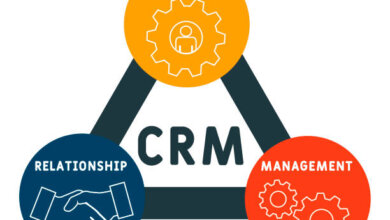In today’s digital era, the fashion industry is experiencing a major transformation. The rise of the virtual fashion influencer is redefining how Americans discover, engage with, and shop for style. These AI-crafted digital icons are captivating audiences worldwide, while AI stylists—powered by advanced algorithms—are quietly personalizing fashion advice on an unprecedented scale. As both virtual personas and AI-driven tools gain momentum, the fashion world is at the exciting crossroads of creativity, technology, and commerce.
Whether it’s scrolling through Instagram or exploring shoppable videos, consumers are interacting with style in new, immersive ways. The digital age has given birth to novel forms of fashion expression, where reality blurs with virtual innovation. This blog dives deep into how virtual fashion influencers and AI stylists differ, complement each other, and together shape the future of digital fashion and shopping experiences.
What Is a Virtual Fashion Influencer?
A virtual fashion influencer is essentially a computer-generated personality brought to life by AI, CGI, and the creative efforts of skilled digital artists. These digital avatars have fully-fledged online presences, posting style content, engaging with followers, and partnering with major brands, much like their human counterparts.
What sets these virtual influencers apart is their limitless nature. They can embody any style, personality, or trend imaginable—unbound by real-world constraints like travel, aging, or physical fatigue. They appear seamlessly across social media platforms such as Instagram, TikTok, and YouTube, where they gather millions of followers and inspire countless fashion choices.
Let’s look at a few of the most famous virtual fashion influencers:
- Lil Miquela: One of the first and most well-known virtual influencers, Lil Miquela has amassed over 2.6 million followers. She has collaborated with luxury fashion houses such as Chanel, Prada, and Louis Vuitton. Brands value her ability to engage audiences with a unique blend of hyperrealism and digital storytelling.
- Imma: This Japanese virtual model is celebrated for her realistic features and advocacy for inclusivity in fashion. Imma works with diverse brands like IKEA and Porsche, bringing a new dimension to digital fashion campaigns.
- Rozy: Hailing from South Korea, Rozy is a virtual influencer who champions sustainability in fashion. Her partnerships with Chanel, Hermes, and Calvin Klein reflect the growing consumer interest in eco-friendly style choices.
- Noonoouri: Managed by IMG Models, Noonoouri focuses on digital haute couture. She brings virtual elegance to the runway and has worked with powerhouses like Versace and Balenciaga.
The market for virtual fashion influencers is booming. Valued at over $2.1 billion in 2024, this segment is expected to expand as more brands recognize the value of these digital personas for reaching younger, digitally native audiences who crave innovation in their fashion experience.
What Are AI Stylists?
If virtual fashion influencers shine in the spotlight, AI stylists operate behind the scenes as the personalized fashion consultants of the digital age. Powered by machine learning, data analytics, and augmented reality (AR), AI stylists analyze a vast array of user data—such as body measurements, style preferences, past purchases, and even social trends—to craft personalized recommendations.
Some key capabilities of AI stylists include:
- Tailored outfit suggestions: Based on a user’s unique profile, AI stylists suggest looks that match their lifestyle, occasion, and preferences.
- Real-time trend alerts: By tracking emerging styles and seasonal changes, AI stylists keep users updated on what’s hot in fashion.
- Virtual try-ons: Using AR and VR technologies, shoppers can see how clothes and accessories look on them digitally before buying.
- Size and fit guidance: AI helps reduce the frustration of ill-fitting clothes by recommending the best sizes for individual body types.
In the U.S., many retailers and startups are adopting AI stylists to transform online shopping. For example, Stitch Fix combines human stylists with AI insights to recommend apparel that fits both style and body perfectly, dramatically improving customer satisfaction and lowering costly returns.
This personalized approach appeals to modern consumers who want fashion guidance that feels bespoke and relevant. As technology advances, AI stylists become an essential part of creating seamless and satisfying shopping journeys.
Virtual Fashion Influencer vs AI Stylist: A Side-by-Side Comparison
| Feature | Virtual Fashion Influencer | AI Stylist |
| Role | Brand ambassador, trendsetter | Personal shopper, fashion advisor |
| Interaction | Public, social media content | Private, one-on-one recommendations |
| Technology | CGI, AI, creative teams | Machine learning, data analytics |
| Brand Impact | Awareness, engagement, storytelling | Conversion, retention, satisfaction |
| Examples | Lil Miquela, Imma, Rozy, Noonoouri | Stitch Fix, Amazon Personal Shopper, chatbots |
| Audience | Millions of global followers | Individual shoppers |
| Monetization | Sponsored posts, brand deals | Subscription, affiliate sales |
Together, virtual fashion influencers and AI stylists play distinct yet complementary roles in the digital fashion ecosystem. Virtual influencers excel at generating buzz, cultural conversations, and aspirational style ideals, while AI stylists focus on the practical side, guiding each shopper to a personalized, well-fitting wardrobe.
Industry Trends and Consumer Behavior
The rapid evolution of the digital fashion space is fueled by increasing acceptance and excitement around AI-powered experiences. Marketers and consumers alike are recognizing the value these technologies bring to the table:
- The global AI influencer market is projected to reach $6.95 billion in 2024, a testament to the growing commercial impact of virtual fashion influencers.
- A recent survey found that 63% of marketing professionals plan to incorporate AI in influencer campaigns within the next year, demonstrating widespread industry buy-in.
- Over 50% of marketers believe virtual fashion influencers will significantly reshape fashion marketing strategies, highlighting their growing importance.
- Top virtual influencers like Lil Miquela and Imma have worked with more than 90 brands each recently, generating millions of dollars in media value and engaging core demographics like Gen Z and millennials.
- U.S. retailers employing AI stylists report higher customer engagement and lower return rates, proving the power of personalization in fostering brand loyalty.
Moreover, consumers show increased enthusiasm for interactive, immersive shopping experiences. Virtual try-ons, 3D fashion shows, and AI-generated style content all contribute to a richer fashion discovery process that keeps shoppers engaged and inspired.
The Future: Collaboration, Not Competition
Looking forward, the future of fashion technology is not about virtual fashion influencers versus AI stylists—it’s about how these innovations work together to create seamless, immersive experiences.
Brands are increasingly integrating virtual influencers to set trends, tell compelling stories, and build cultural relevance. Meanwhile, AI stylists ensure those trends translate into personalized style advice that fits each individual’s unique preferences and needs.
One example leading this synergy is Glance AI. Glance combines the imaginative flair of virtual influencers with the precision of AI-driven personalization. Its generative AI crafts real-time, shoppable visual worlds tailored to users’ body types, tastes, and lifestyles—creating fashion experiences far beyond static catalogs.
For more information about Glance’s role in digital fashion innovation, check out their dedicated page.
Future developments we can expect include:
- User-driven AI generation: Shoppers will soon be able to generate and style outfits based on mood, event, or even environment, blending creativity with convenience.
- Real-time brand integration: AI-generated fashion environments will dynamically feature new products, allowing brands to showcase items contextually.
- Expansion beyond fashion: AI-powered personalization will broaden to include beauty, home décor, and lifestyle, providing holistic style solutions.
This collaboration promises a new standard where entertainment, personalization, and commerce merge—changing how Americans explore, shop for, and experience style forever.
Conclusion
The rise of the virtual fashion influencer alongside AI stylists signals a transformative chapter in digital fashion. Virtual influencers command attention, spark cultural conversations, and shape aspirational style narratives. At the same time, AI stylists provide personalized guidance that ensures every shopper’s journey feels unique and meaningful.
Together, they empower brands to innovate, engage, and convert in an increasingly competitive market where consumers expect authenticity paired with deeply personalized experiences. As technology continues to advance and creativity flourishes, digital fashion will become more immersive, inclusive, and inspiring than ever before.
The future of style is here—and it’s digital, personalized, and endlessly exciting.





